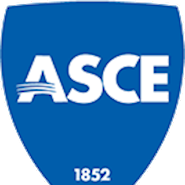ASCE has honored Armin W. Stuedlein, Ph.D., P.E., M.ASCE; Jonathan C. Huffman; Andre R. Barbosa, Ph.D., A.M.ASCE; and Andre F.V. Belejo, Ph.D., C.Eng., Aff.M.ASCE, with the 2023 J. James R. Croes Medal for the paper “Probabilistic Structural System Response to Differential Settlement Resulting from Spatially Variable Soil,” Journal of Geotechnical and Geoenvironmental Engineering, February 2022.
Previous research on the role of spatially variable soil on differential settlements between foundations have taken advantage of numerical simulation to link the greatest probability of exceeding a certain performance limit state (e.g., serviceability, ultimate) to some factor of distance between foundations in terms of the autocorrelation length of soil stiffness. Such studies have shed light on the importance of spatially varying soil properties on potential foundation performance, and have established the concept of a critical scale of fluctuation (i.e., critical autocorrelation length) at which the probability of exceeding a given differential settlement limit is greatest.
However, no studies have included the ability of a structure to redistribute shear and flexure in response to a poor-performing foundation. This interdisciplinary geotechnical-structural investigation uses random fields to simulate foundation soils, a probabilistic, nonlinear soil-foundation model that captures realistic, emergent footing translation and rotation in response to bearing and passive pressures mobilized to resist gravity loads, and a nonlinear structural model to capture exceedance of moment capacity of structural elements, within a Monte Carlo Framework.
The novel, fundamental contributions of this study include (1) the evolution in redistribution of shear and flexure within the structure when subjected to varying degrees of spatially varying soil stiffness, (2) determination that previous estimates of the probability of exceeding certain limits states were too large as a result of neglecting SSI, (3) the fundamental linkage between extreme (lower and upper bound) autocorrelation lengths and minimum probabilities of exceedance of certain limit states, and (4) explication of how the angular distortion-based performance criteria used since Skempton and MacDonald (1976) do not sufficiently capture the performance of steel frame structures, but rather consistently overestimate the likelihood of yielding in the building’s structural frame. The work described in this paper provides a new framework for the systematic evaluation of building performance criteria and is well-suited for the evaluation of reinforced concrete and timber structures that is fully compatible with the continued adoption of reliability-based and performance-based design codes. Further, this framework can serve as the basis for developing performance-based limit-state criteria that accounts for structure type and materials, and will no doubt prove to advance building and repair guidelines and codes.
The J. James R. Croes Medal is presented to the author or authors of a paper that is judged worthy of the award and to be next in order of merit to the paper for which the Norman Medal is awarded.



